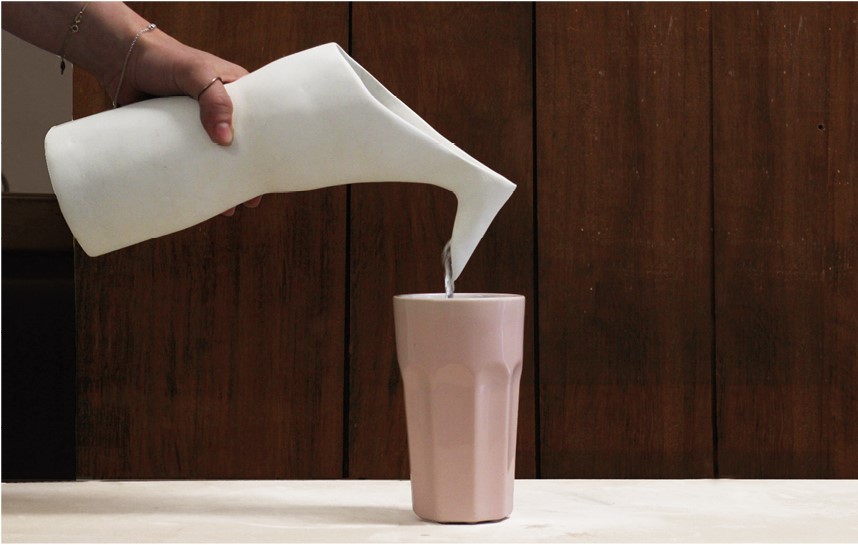Martyna Konopka won this year’s Designing for the Future Competition run by The Future Perfect Company and the University of Brighton. Here she talks about the inspiration and research behind her award winning Dzbanek jug design which incorporates rehabilitation into everyday living .
It is common to think that life affected by an accident or a medical condition isn’t as good as a life uninterrupted. I have come to realise, however, that the lives that have been altered by fate are not worse – they are simply different, and therefore need to be approached in a different, new way.
Throughout a two month internship at a rehabilitation centre, I worked closely with patients who were en route to regaining their mental and physical health. I learnt about the most curious of cases, from a condition in which a patient’s vision was turned 90°sideways, to one where a patient wasn’t able to say anything aside from the word ‘mathematics’. With so many issues differing one person from the next, the key was to observe for patterns and draw conclusions to later on be able to introduce versatile solutions.
My attention was drawn towards patients recovering from stroke. It appeared that, although everyone experienced recovery in a different, personal way, the problems they most commonly faced could be divided into muscle contractures, and deterioration in brain functions. Despite numerous existing ways to tackle these problems, I couldn’t help but ask myself whether all those solutions actually gave desired results.
 The best way to gain this sort of insight was to obtain it directly from the target group. I constructed cultural probes in the form of questionnaires which, filled out by the patients (sometimes with help from their carers), highlighted potential areas where help might be necessary. A central problem became clear as I realised that the monotonous nature of rehabilitation exercises is simply tedious and, in some cases, even patronising (it isn’t surprising that educated 70 year old patients can get frustrated when they struggle putting together Winnie the Pooh jumbo jigsaw puzzles). If the road to recovery and independence is unengaging, how can we expect it to be effective?
The best way to gain this sort of insight was to obtain it directly from the target group. I constructed cultural probes in the form of questionnaires which, filled out by the patients (sometimes with help from their carers), highlighted potential areas where help might be necessary. A central problem became clear as I realised that the monotonous nature of rehabilitation exercises is simply tedious and, in some cases, even patronising (it isn’t surprising that educated 70 year old patients can get frustrated when they struggle putting together Winnie the Pooh jumbo jigsaw puzzles). If the road to recovery and independence is unengaging, how can we expect it to be effective?
Therefore, if rehabilitation needs to be undertaken by all patients affected by stroke, wouldn’t it be easiest and most convenient for all if rehabilitation was just part of everyday life? Revolutionary in its simplicity, I set this statement as a target for my project and began to think about how to turn it into reality.
For this approach to have a true impact, it needs to be incorporated into as many parts of everyday life as possible. Keeping this in mind I came up with a number of products, ranging from inconspicuous food containers that force word association, to cereal boxes with built in puzzles encouraging spacial thought. Eventually, I created a prototype for a product that kills two birds with one stone by tackling two problems faced by stroke patients – hand contractures, and a deterioration of brain functions. Dzbanek (Polish for jug), introduces a new way of pouring which stimulates the brain to think differently, but also forces a hand open due to its lack of a handle.
To determine the way users would handle such an object, I went back to the cultural probes. After re-analysing the data, I realised that I needed to made sure the jug was fit for ambidextrous use and was very durable and shock proof. Further prototype tests with a group of target users showed areas for improvement and, through completion of a second prototype, the product eventually achieved its final frame, in which function is key and (only slightly) greater than or equal to form.
Though some features of the product are strictly determined by its purpose, the process of creating an attractive shape can never be overlooked. A key aspect of the jug, as well as any object intended to be part of the range in the future, is that through its innovativeness, it becomes an intriguing conversation starter instead of yet another stigmatising medical device.
With the help of Dzbanek, I am hoping to promote a new way of thinking about regaining health, incorporating rehabilitation into the everyday lives of not only recovering stroke patients, but of anyone working towards independent living. It is important not to overlook problems faced by the ageing population but to learn to design accordingly. Perhaps this way, we can make those affected lives not different, but simply better.


